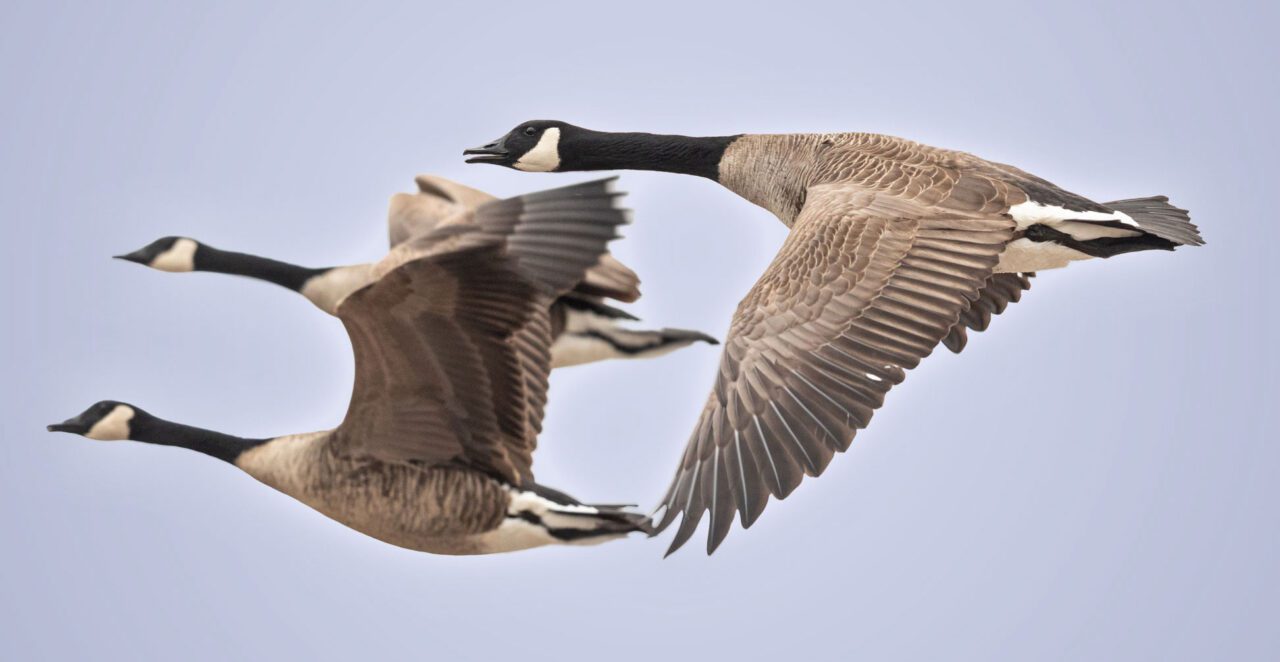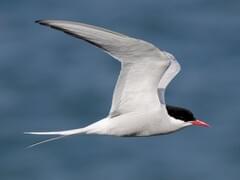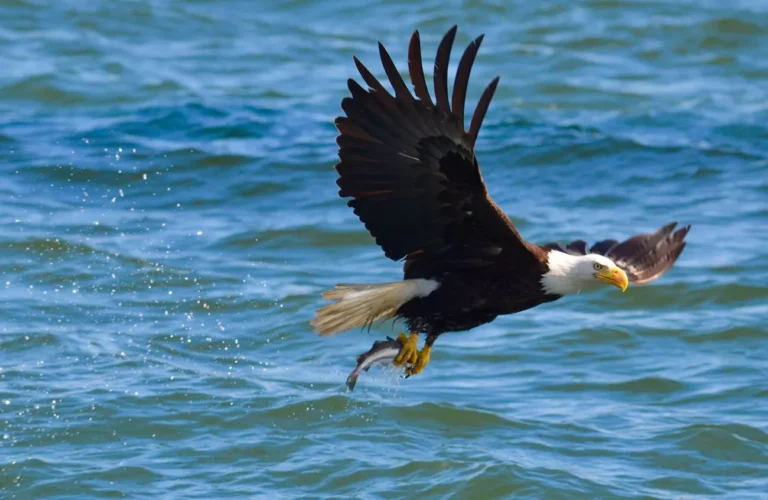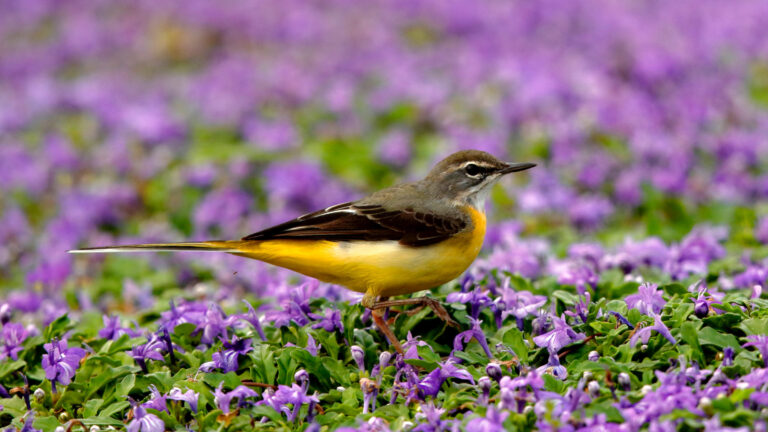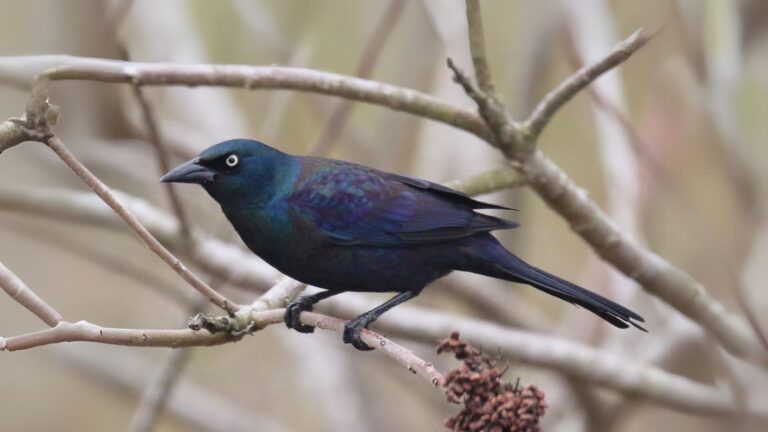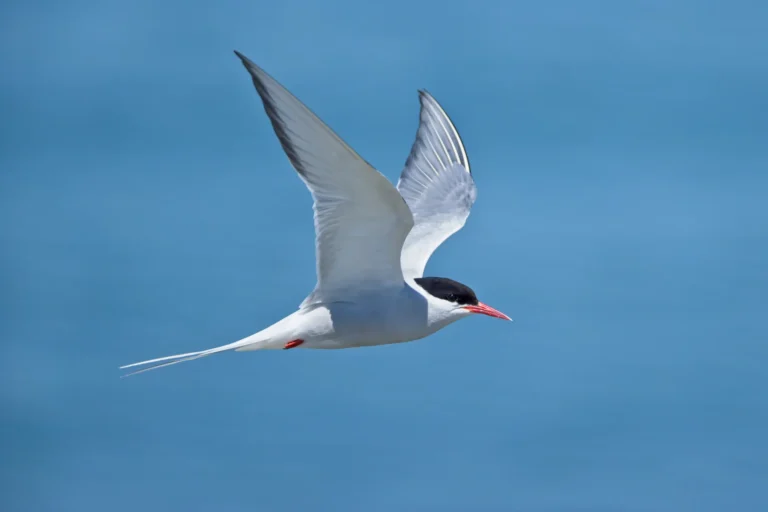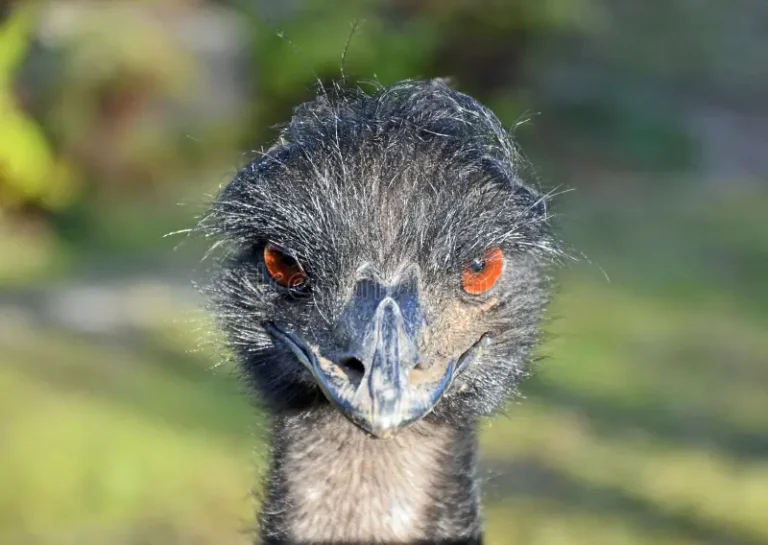The Fascinating Behavior of Migratory Birds: A Deep Dive Into Seasonal Navigation Patterns
Every year, billions of birds embark on incredible journeys across continents, navigating by stars, landmarks, and Earth’s magnetic field.
These migratory patterns have fascinated scientists and bird enthusiasts alike, revealing complex behaviors that help birds survive changing seasons.
Migratory birds can travel thousands of miles each year. Some species like the Arctic Tern fly over 44,000 miles annually in their quest for optimal feeding and breeding grounds.
What’s particularly remarkable is how these birds adapt physically for their journeys.
Many species alter their diving behavior to find food during migration, while others undergo physiological changes that increase fat stores and muscle mass.
The timing of these migrations is precisely synchronized with environmental cues such as day length, temperature changes, and food availability, showcasing the fascinating adaptations that have evolved over millennia.
The routes taken by these avian travelers form invisible highways in the sky called flyways, which connect breeding grounds in the north to wintering grounds in the south.
Along these pathways, birds face numerous challenges including predators, extreme weather, and increasingly, human-caused hazards like light pollution and habitat loss, making their migratory behavior all the more impressive.
Key Takeaways
- Migratory birds navigate using multiple natural cues including stars, landmarks, and Earth’s magnetic field to travel thousands of miles annually.
- Birds undergo remarkable physiological changes before migration, developing increased fat stores and muscle mass to fuel their long journeys.
- Conservation efforts are crucial as migratory birds face increasing threats from habitat loss, climate change, and human development along their traditional flyways.
The Phenomenon of Bird Migration
Bird migration stands as one of nature’s most remarkable events, with billions of birds traveling vast distances each year.
This biological rhythm shapes ecosystems across continents and represents a critical survival strategy for thousands of species.
Understanding Migration Patterns
Bird migration varies dramatically between species.
Some birds travel just a few miles while others cross entire continents and oceans.
The primary driving force behind migration is resource availability – food, nesting sites, and favorable climate conditions.
Many migratory songbirds from North America travel to Central America and South America during winter months.
These neotropical migrants follow specific flyways – established aerial highways that connect breeding and wintering grounds.
Data from eBird has revealed that migration timing is changing due to climate shifts.
Birds now arrive at breeding grounds earlier and depart later than in previous decades.
Common Migration Types:
- Latitudinal: north-south movements (most common)
- Altitudinal: moving up and down mountains
- Loop migration: different routes for spring and fall journeys
Bird Navigation and Orientation
Birds use multiple navigational tools to find their way during migration.
The fascinating behavior of migratory birds includes their ability to detect Earth’s magnetic field through specialized cells containing magnetite.
Many species navigate using celestial cues such as star patterns and the position of the sun.
Research shows birds calibrate their internal compass daily at sunrise and sunset when polarized light patterns are most visible.
Physical landmarks like coastlines, mountain ranges, and rivers provide visual guidance.
Young birds typically learn migration routes by following experienced adults during their first journey.
The most impressive aspect is how birds combine these navigation methods.
When one system is compromised (like cloudy skies blocking stars), they rely on others to stay on course.
Biology of Migratory Birds
Migratory birds possess remarkable biological adaptations that enable them to undertake incredible journeys spanning continents.
These adaptations have evolved over millions of years, optimizing birds for their demanding travels through different environments and conditions.
Physical Adaptations for Migration
Migratory birds develop special physical traits that support their long journeys.
Their bodies often transform before migration, building up fat reserves that serve as fuel. Some species can double their body weight with these reserves.
Flight muscles in migratory birds are larger and more efficient than in non-migratory species.
Their biological clocks regulate migration timing with amazing precision.
Their metabolism shifts dramatically during migration periods.
Birds can achieve remarkable flight speeds—some species like the Great Snipe can travel at over 60 mph during migration.
The Arctic Tern, which migrates from the Arctic to Antarctic annually, can reach speeds of 25-35 mph.
Specialized respiratory and circulatory systems allow birds to fly at high altitudes where oxygen is limited.
Some species, like Bar-headed Geese, can fly over the Himalayas at elevations exceeding 29,000 feet.
Evolutionary Aspects of Migratory Behavior
Migration evolved as a survival strategy allowing birds to access seasonal food sources and breeding grounds.
This behavior developed over thousands of generations in response to climate changes and geographic shifts.
Not all members of a species migrate the same way.
Partial migration—where some individuals migrate while others remain resident—showcases evolution in action. This flexibility helps species adapt to changing environments.
The modern understanding of bird migration began developing in the 1800s as scientific methods improved.
Prior to this, many believed birds hibernated underwater during winter.
Different migration patterns exist across bird families:
- Complete migration: All individuals migrate
- Partial migration: Only some individuals migrate
- Differential migration: Males and females migrate at different times or to different locations
Role of Plumage in Migration
Bird feathers serve critical functions during migration beyond simple flight.
Plumage changes often signal migration readiness, with many species molting before their journeys to ensure optimal feather condition.
White feathers, particularly in Arctic species, can provide camouflage during breeding seasons and reduce predation risk. They also play a role in thermoregulation, which is crucial during the energy-intensive migration process.
Water-resistant feathers are essential for diving birds that migrate over oceans.
These specialized feathers prevent waterlogging and maintain insulation in harsh conditions.
Feather coloration can also serve social functions.
Bright plumage helps birds recognize members of their own species during migratory stopovers, facilitating group formation for the next leg of their journey.
Migratory Birds of the Americas
The Americas host an impressive array of migratory birds that travel thousands of miles between breeding and wintering grounds.
These journeys showcase remarkable navigation abilities and physical endurance that have evolved over millions of years.
Notable Species in North America
The Ruby-throated Hummingbird stands out as an extraordinary migrant despite weighing just 3-4 grams.
These tiny birds cross the Gulf of Mexico in a single 500-mile flight without stopping.
The Broad-winged Hawk migrates in spectacular groups called “kettles” that can contain thousands of birds spiraling upward on thermal currents.
Their migration timing is remarkably consistent year after year.
Swallow-tailed Kites exhibit elegant flight during their journeys between North America and South America.
Their distinctive forked tails and contrasting black-and-white plumage make them easily identifiable during migration.
Many North American birds travel to the tropics during winter months, forming part of a group known as Neotropical migrants.
Unique Migrants of Central and South America
Central and South American regions serve as critical wintering grounds for many northern species while hosting their own unique migrants.
The Andean regions support specialized altitudinal migrants that move up and down mountains seasonally.
Hummingbirds in the Americas show diverse migration patterns. While some species travel long distances, others migrate vertically between mountain elevations as flowering seasons change.
Seabirds of the Sula genus (boobies) perform impressive migrations along coastal routes.
These birds have specialized diving behavior that allows them to plunge from heights into ocean waters to catch fish.
Many Central American migrants navigate the complex geography of highlands and lowlands rather than making dramatic north-south journeys.
Their movements often correlate with seasonal rainfall patterns that affect food availability.
Migratory Bird Habitats and Conservation
Migratory birds face multiple challenges as they travel between breeding and wintering grounds, including habitat loss, climate change impacts, and human disruption of traditional routes.
Conservation efforts must address these threats through coordinated international approaches.
Protecting Migratory Routes
Migratory birds depend on specific pathways called flyways that connect their seasonal habitats.
These routes contain critical stopover sites where birds rest and refuel during long journeys.
Many species show remarkable site fidelity to these stopover locations, returning to the same areas year after year.
International agreements like the Convention on Migratory Species protect these routes across national boundaries.
The agreement recognizes that no single country can protect migratory species alone.
Key protection strategies include:
- Creating protected corridors connecting habitats
- Limiting development in critical stopover areas
- Reducing light pollution that disorients night migrants
- Implementing bird-friendly building designs
These measures help maintain the integrity of flyways that many species have used for thousands of years.
Habitat Conservation Initiatives
Effective conservation requires protecting diverse habitats across migratory ranges.
Wetlands are particularly crucial, as many waterbirds demonstrate amazing flexibility in adapting to these environments.
Major conservation programs include:
| Initiative | Focus Area | Key Achievements |
|---|---|---|
| Ramsar Convention | Wetlands | Protected 2,400+ sites worldwide |
| Important Bird Areas | Critical habitats | Identified 13,000+ essential locations |
| North American Waterfowl Management Plan | Wetland restoration | Conserved 22+ million acres |
Local community involvement strengthens these initiatives.
When residents participate in habitat restoration, conservation efforts gain cultural and political support.
Research on habitat use patterns helps prioritize areas needing protection, ensuring limited conservation resources target the most critical locations.
Impact of Climate Change
Climate change threatens migratory birds by altering traditional habitats and disrupting the timing of migrations.
Rising temperatures shift the availability of food resources, creating mismatches between bird arrivals and peak food abundance.
Some impacts include:
- Earlier spring plant and insect emergence
- Changes in precipitation affecting wetland availability
- Sea level rise destroying coastal stopover sites
- More frequent extreme weather events
Birds show some capacity to adapt their migratory behavior, with some species migrating earlier or changing routes.
However, these adaptations may not happen quickly enough to match rapidly changing conditions.
Conservation strategies must now incorporate climate projections.
Climate-smart conservation focuses on protecting diverse habitats across elevations and latitudes to give birds options as conditions change.
Birdwatching and Data Collection
Birdwatchers play a crucial role in tracking migratory bird patterns through careful observation and documentation.
Their contributions help scientists understand migration routes, timing changes, and population fluctuations across different geographic areas.
Birdwatching in Key Geographic Locations
Louisiana offers exceptional bird watching opportunities, particularly for observing migratory species.
Grand Isle and Cameron Parish serve as critical stopover points for neotropical migrants crossing the Gulf of Mexico.
These coastal locations provide first landfall for exhausted birds completing their long journeys.
The Louisiana Ornithological Society organizes regular field trips to these hotspots during peak migration seasons (April-May and September-October).
Experienced birders can identify over 100 species in a single day during these peak periods.
Bird species identification improves with practice and location familiarity.
At Grand Isle, warblers, tanagers, and thrushes appear in impressive numbers during spring migration, while Cameron Parish excels for shorebird and waterfowl diversity year-round.
Contributing to Citizen Science
eBird has revolutionized citizen science participation in ornithology. This Cornell Lab of Ornithology platform allows birders to submit checklists that contribute to a massive global database of bird observations, making it the world’s largest biodiversity-related citizen science project.
The Baton Rouge Audubon Society coordinates several citizen science initiatives including the Christmas Bird Count and Breeding Bird Surveys.
These long-running projects rely on volunteer participation to monitor bird population trends over time.
Data collected through eBird.org helps researchers track migration timing, distribution changes, and population trends.
Even casual observations become valuable when entered into these databases.
BirdLouisiana.org provides resources for local participation in monitoring projects focused specifically on the state’s unique avian populations.
Utilization of Birding Apps and Websites
Modern technology has transformed birdwatching and data collection efficiency.
The Audubon Bird Guide App offers comprehensive species information, photographs, and recordings to assist with identification in the field.
eBird’s mobile app enables real-time checklist submission with GPS location tagging.
This functionality creates precise distribution maps that track migratory movements across continents with unprecedented accuracy.
Birding websites provide community forums where observers share unusual sightings and migration updates.
For those interested in birding in Louisiana, these platforms offer location-specific tips and recent observation lists.
Popular tools for serious birders include:
- Merlin Bird ID (for instant identifications)
- BirdsEye (for finding target species)
- iNaturalist (for documenting all wildlife observations)
- BirdNet (for identifying birds by their songs)
Interactions with Humans and Other Species
Migratory birds face complex relationships with both humans and other wildlife as they travel across continents. These interactions shape their survival strategies and have influenced their behavior over evolutionary time.
Migratory Birds and Predation
Predation is a major survival challenge for migratory birds.
During migration, birds become vulnerable as they travel through unfamiliar territories and experience physical exhaustion.
Many birds have developed remarkable camouflage techniques to avoid detection while resting.
Their plumage often matches their surroundings, making them nearly invisible to predators.
Predator avoidance also influences migration timing.
Many species travel at night to reduce the risk of being spotted by daytime hunters.
This behavior is a direct result of natural selection favoring birds that can evade predators.
Bird eggs are particularly vulnerable during nesting periods.
Some migratory species have developed communal nesting strategies where multiple birds help guard against predators, increasing the survival chances of their young.
Human Influence on Bird Migration
Human activity significantly impacts migratory bird patterns.
Urban development has eliminated crucial stopover sites where birds traditionally rest and refuel during long journeys.
Light pollution in cities confuses nocturnal migrants, often causing them to collide with buildings or circle illuminated structures until exhausted.
More than one billion birds die annually in North America from building collisions.
Climate change has disrupted the timing of migrations, creating mismatches between birds’ arrivals and the availability of their food sources.
Some species now arrive at breeding grounds when insect populations have already peaked.
Fascinating interactions between humans and migratory birds also occur through research.
Scientists track migrations using lightweight tags, revealing previously unknown routes and behaviors.
Creating a Bird-Friendly Environment
People can support migratory birds by creating welcoming environments along migration routes.
Installing bird feeders with appropriate food helps replenish energy reserves for traveling birds.
Different feeder types attract various species:
| Feeder Type | Birds Attracted | Best Food |
|---|---|---|
| Platform | Cardinals, jays | Mixed seed, fruit |
| Tube | Finches, chickadees | Sunflower, nyjer |
| Hummingbird | Hummingbirds | Sugar water (1:4 ratio) |
A birdbath provides essential water for drinking and bathing.
Birds need to maintain clean feathers for efficient flight during migration. Keeping water fresh and shallow (1-2 inches) makes it accessible to most species.
Hummingbird feeders filled with a simple sugar solution (one part sugar to four parts water) provide crucial energy for these tiny migrants who may double their weight before crossing large bodies of water.
Native plant gardens support birds by hosting the insects they need for protein-rich meals.
Even small yards can become vital refueling stations along migration corridors.
Understanding Bird Behavior
Migratory birds exhibit remarkable behaviors that enable them to thrive in changing environments, find food, reproduce successfully, and overcome various survival challenges.
These behaviors have evolved over millennia to create specialized adaptations for each species’ unique ecological niche.
Feeding and Foraging Patterns
Birds employ diverse feeding strategies based on their physical characteristics and habitats.
Many migratory species switch food sources seasonally, adapting to available resources along their routes.
The bee hummingbird, the world’s smallest bird, exemplifies specialized feeding behavior through its remarkable hovering ability.
This tiny dynamo burns tremendous energy maintaining stationary flight while extracting nectar from flowers with its specialized bill.
Some migratory birds demonstrate impressive cognitive abilities in their foraging.
Dark-eyed juncos remember reliable feeding locations and adjust their techniques based on seasonal availability of seeds and insects.
Aquatic migrants like loons and cormorants possess remarkable diving ability, plunging beneath the surface to capture fish.
Some cormorants can dive up to 150 feet deep, with their eyes specially adapted for underwater vision.
| Bird Type | Primary Food Source | Notable Adaptation |
|---|---|---|
| Hummingbirds | Nectar | Hovering flight |
| Juncos | Seeds/Insects | Memory-based foraging |
| Waterfowl | Aquatic plants/animals | Diving capability |
Breeding and Nesting Habits
Migratory birds often travel thousands of miles to reach specific breeding grounds.
Timing is critical, as they must synchronize arrival with optimal conditions for raising young.
Many species display elaborate courtship behaviors to attract mates.
The indigo bunting male transforms from brown to brilliant blue during breeding season and performs complex songs to establish territory and attract females.
Nest construction varies dramatically between species.
Some birds build elaborate structures while others create simple scrapes on the ground. Materials range from sticks and grass to mud, moss, and even spider silk for reinforcement.
Parental investment differs significantly among migrants.
Some species like albatrosses mate for life and share childcare equally, while others may abandon parental duties shortly after eggs are laid.
Adaptations for Survival
Migration itself represents an extraordinary survival strategy.
Birds navigate using multiple cues including stars, landmarks, Earth’s magnetic field, and even smell.
Physical adaptations enable specific behaviors.
Webbed feet provide exceptional swimming efficiency for water birds, while also serving as effective rudders during flight for some species.
Metabolic adaptations allow for extreme energy use during migration.
Some birds enter a state similar to torpor at night, reducing energy expenditure during rest periods.
Plumage changes serve dual purposes.
The indigo bunting and many other migrants molt into less conspicuous colors for fall migration, providing camouflage during travel while conserving energy otherwise spent maintaining bright breeding colors.
Diving birds have evolved specialized respiratory systems that allow them to remain underwater for extended periods, with some species capable of dives lasting over three minutes.
Frequently Asked Questions
Bird migration involves complex behaviors influenced by internal biological cues and external environmental factors.
These remarkable journeys require specialized adaptations and precise navigation systems that have evolved over millions of years.
How do birds navigate during migration?
Birds use multiple navigation methods during their migratory journeys.
They can detect Earth’s magnetic field through specialized cells containing magnetite in their beaks and eyes, creating a natural compass.
The sun and stars serve as critical orientation guides, with many species able to adjust their internal clocks to compensate for the sun’s movement throughout the day.
Young birds appear to have inherited star maps that help them navigate by night.
Birds also use landscape features like mountains, coastlines, and rivers as visual guideposts.
Some species recognize familiar smells to navigate back to breeding grounds.
What environmental factors influence the migratory patterns of birds?
Weather conditions significantly impact migration timing and routes.
Birds often wait for favorable winds to reduce energy expenditure and may delay departure during storms or adverse conditions.
Food availability drives migration patterns, with birds traveling to locations where seasonal resources are abundant.
Climate change has begun altering traditional migration schedules as food sources appear earlier or later than historical patterns.
Daylight duration (photoperiod) triggers hormonal changes that initiate migratory behavior.
Birds have evolved to recognize these seasonal light changes as signals to prepare for their journeys.
What are the physiological changes birds undergo to prepare for migration?
Birds experience hyperphagia—a dramatic increase in feeding behavior—before migration. This allows them to build fat reserves that serve as fuel during long flights.
Their muscles undergo remarkable changes, with flight muscles increasing in size and efficiency.
Heart and lung capacity often expand to support the aerobic demands of sustained flight.
Many species exhibit fascinating behavioral changes before migration, becoming restless at night (zugunruhe) and gathering in flocks.
Internal organs not essential for flight may temporarily shrink to reduce weight.
Which bird species travel the longest distances during migration?
Arctic Terns hold the record for longest migration, traveling from Arctic breeding grounds to Antarctic feeding areas and back annually—a round trip of about 44,000 miles. This gives them exposure to more daylight than any other creature on Earth.
Bar-tailed Godwits can fly over 7,000 miles non-stop across the Pacific Ocean from Alaska to New Zealand without feeding or resting.
This remarkable journey takes approximately eight days of continuous flight.
The Common Swift spends almost its entire life in flight, staying airborne for up to ten months at a time.
These birds eat, sleep, and even mate while flying during their migrations between Europe and Africa.
How do migratory birds impact ecosystem dynamics?
Migratory birds serve as vital seed dispersers, transporting plant seeds across continents in their digestive tracts. This process helps maintain plant genetic diversity and assists in forest regeneration.
They provide natural pest control by consuming vast quantities of insects during breeding seasons.
A single barn swallow can consume hundreds of insects daily, benefiting agriculture and forest health.
Migratory species create resource pulses in ecosystems they visit, with their seasonal arrivals and departures affecting everything from predator populations to nutrient cycling.
Their droppings enrich soils and water bodies with important nutrients.
What conservation efforts are in place to protect migratory birds and their habitats?
The Migratory Bird Treaty Act provides legal protection for migratory birds in the United States. It prohibits their hunting, capture, or killing without proper permits. Similar legislation exists in many countries worldwide.
Important Bird Areas (IBAs) have been established globally to protect critical habitats along migration routes. These designated sites receive special conservation attention and monitoring.
International agreements like the Convention on Migratory Species coordinate conservation efforts across national boundaries. Meanwhile, habitat restoration projects focus on preserving wetlands, forests, and grasslands essential for migratory species’ survival.
